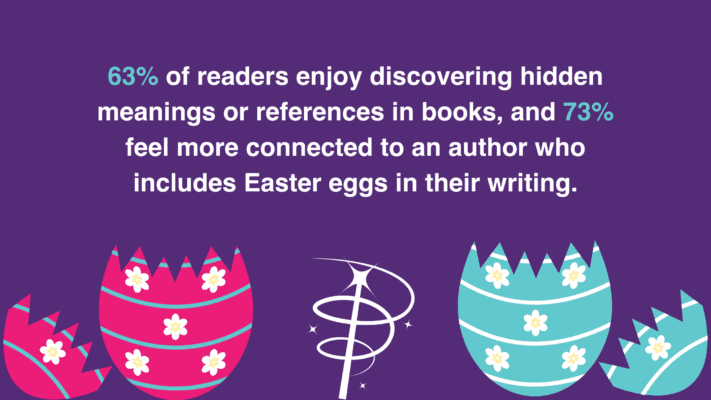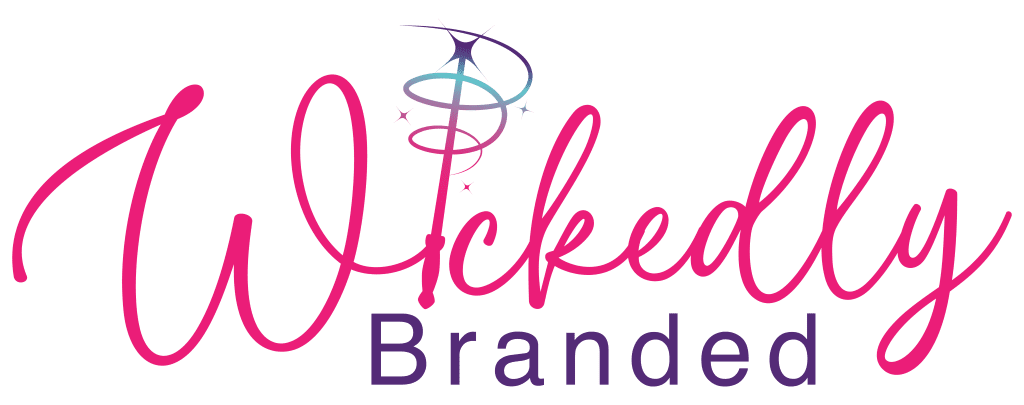Welcome to the world of Easter eggs in marketing – where hidden gems lie waiting to be discovered by keen-eyed readers and fans. As a boutique small business marketing agency dedicated to helping entrepreneurs grow their brands, we understand the power of storytelling and the impact that cleverly placed Easter eggs can have on engaging audiences and boosting your sales. So, grab your magnifying glass, and let’s uncover the secrets of Easter eggs in author marketing!
What Exactly is an Easter Egg in Marketing?
In marketing, an Easter egg refers to a hidden message, inside joke, or subtle reference strategically placed within the content to surprise and delight the audience. These hidden gems can take many forms, including hidden messages within book covers, subtle references to other works, or even secret clues embedded within the storyline. Easter eggs add more depth to the reading experience, rewarding attentive readers with a sense of discovery and connection to the author’s world.
Why You Should Use Easter Eggs:
Authors should embrace Easter eggs as a powerful marketing tool because they create a sense of intrigue and engagement among readers. According to a study by Nielsen Book, 63% of readers enjoy discovering hidden meanings or references in books, and 73% feel more connected to an author who includes Easter eggs in their writing. By incorporating Easter eggs into their content, authors can foster a deeper connection with their audience, encourage reader engagement, and differentiate themselves in a crowded market.

How Authors Can Use Easter Eggs in Their Writing
There are countless creative ways for authors to incorporate Easter eggs into their writing and content. For example, authors can include subtle references to their other works or characters, create hidden messages within book covers or illustrations, or weave secret clues into the storyline that lead readers on a treasure hunt of discovery.
20 creative ways that authors can incorporate Easter eggs into their books:
- Character Names: In your story, use the names of family members, friends, or even readers as character names.
- Hidden Messages: Embed hidden messages or codes within the text that readers can decipher for additional clues or insights.
- Symbolic Objects: Include symbolic objects or items throughout the story with hidden meanings or foreshadowing events.
- Historical References: Integrate references or allusions that add depth and context to the narrative.
- Book References: Include subtle references or nods to other books or literary works that have influenced your writing.
- Numerical Patterns: Incorporate numerical patterns or sequences that hold significance within the storyline.
- Visual Easter Eggs: Add visual Easter eggs in illustrations or book covers that provide additional context or foreshadowing.
- Wordplay: Use wordplay or puns that create hidden meanings or double entendres within the text.
- Cultural References: Include references to pop culture, music, movies, or current events that resonate with your target audience.
- Secret Messages: Embed secret messages or clues within chapter headings, page numbers, or margins.
- Character Connections: Establish connections between characters or storylines revealed through subtle hints or clues.
- Foreshadowing: Drop subtle hints, foreshadowing future events, or plot twists that keep readers engaged and guessing.
- Hidden Stories: Introduce secondary or hidden storylines that intersect with the main plot and provide additional depth.
- Anagrams: Incorporate anagrams or hidden words within the text that clever readers can uncover.
- Literary References: Include references to famous literary quotes, authors, or works that add layers of meaning to the narrative.
- Character Backstories: Provide hints or clues about characters’ backstories or motivations that are revealed gradually throughout the book.
- Visual Cues: Use cues such as fonts, formatting, or text styles to convey hidden messages or themes.
- Meta-References: Make meta-references to the writing process, publishing industry, or author’s personal experiences that enrich the reading experience.
- Interactive Elements: Include interactive elements such as puzzles, quizzes, or hidden messages that readers can engage with outside the book.
- Fan Tributes: Honor loyal fans or supporters by including their names, messages, or artwork in the book as Easter eggs.
Authors can enhance the reading experience and engage readers on a deeper level. This can also give a sense of intrigue and excitement that keeps them returning for more.
3 Examples of Authors and Artists Who Do This Well:
Several authors and artists have mastered using Easter eggs to engage their audience and enhance their storytelling.
- J.K. Rowling, author of the Harry Potter series, is famous for hiding subtle clues and references throughout her books that foreshadow future events and tie the series together.
- Quentin Tarantino is a filmmaker known for incorporating hidden connections and references between his films, creating a shared cinematic universe that delights fans. These examples demonstrate how Easter eggs can add depth and richness to storytelling, creating a more immersive experience for readers and fans.
- Taylor Swift, a musician, is a master at incorporating Easter eggs into her music, videos, and overall brand strategy. This delights her fans with hidden messages and clues that create a sense of mystery and excitement. One notable example of Taylor Swift’s use of Easter eggs is her album releases. Swift is known for dropping subtle hints and clues about her upcoming albums and singles in the months following their release. For example, before the release of her album “1989,” Swift posted cryptic messages on social media, including pictures of herself standing next to the number 5, which hinted at the album’s release date on October 27, 2014 (the fifth track on the album is titled “Track 5”).
- Similarly, Swift used Easter eggs in the music video for her song “ME!” featuring Brendon Urie, where she included visual references and clues that hinted at the themes and motifs of her upcoming album “Lover.” These Easter eggs created buzz and anticipation among Swift’s fans, who eagerly dissected the videos and social media posts in search of hidden meanings and clues about the upcoming album. By incorporating Easter eggs into her music and videos, Taylor Swift engages her fans on a deeper level, creating a sense of excitement and anticipation that keeps them returning for more.
Additional Author Resources
- Dominate Ads and watch your brand achieve unparalleled growth with my Ads Domination Download
- Elevate Your Book’s Journey Explore the essential Marketing Strategies for Children’s Authors
- Key elements of building an amazing author website: Author Website Building Guide
- Digital Marketing Content Pillars For Authors: Author Content Marketing Strategies
- Communicate directly with your audience: Email Newsletter List Building Guide For Authors
- Are you telling your story? Importance of Branding for Authors
- Marketing for Authors: Literary Success BluePrint- Marketing Strategies for Authors
|
|
|
|


